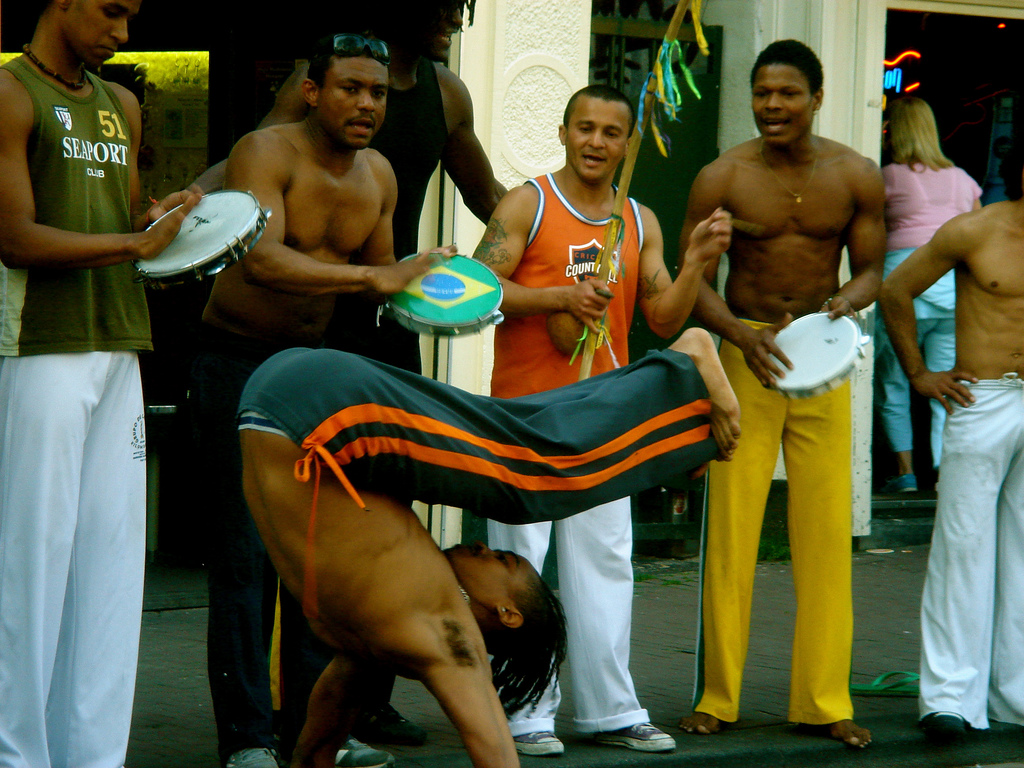
Practicing capoeira, a form of martial arts with Afro-Brazilian roots, in the street. With the abolition of slavery, capoeira was declared illegal, but it saw a resurgence as an art form and a part of cultural identity in the 20th century. Photograph by author jonrawlinson, from Wikimedia Commons.
The road to re-democratization would prove to be difficult. Following the sudden death of president-elect Tancredo Neves in 1985, a vice-president, José Sarney, would once again occupy Brazil’s highest elected position. Throughout the period following re-democratization in the 80s and into the 90s, the debt-financed policies of Import Substitute Industrialization the decade earlier would throw Brazil into an inflationary spiral. Inflation during this period would peak at over 2000 percent. The introduction of the plano real and later election of Fernando Henrique Cardoso would place this crisis under control, setting Brazil on a steadier path toward growth. During this time period many social movements spread their wings after years of the military dictatorship’s repression. Areas including education, the role of women, race relations, and public health all had sectors of civil society involved in their cause and scored victories during this time.
